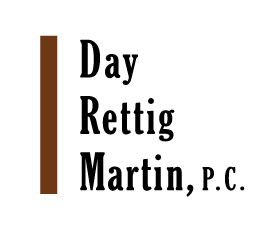On March 11, President Biden signed the American Rescue Plan Act (ARPA), the government’s most recent $1.9 trillion coronavirus relief bill. According to information provided by the US Chamber of Commerce, there are many things in the new bill to assist struggling small businesses. In particular, the ARPA establishes what is known as the Restaurant Revitalization Fund (RRF) separate and apart from the existing Payroll Protection Program (PPP). This new RRF establishes a $28.6 billion grant program specifically for restaurants and bars. Owners with fewer than twenty locations and whose locations are not owned by the state or local government will be able to apply for RRF grants.
Unlike the PPP where applications are through certain, qualified financial institutions, the RRF program will be administered directly through the Small Business Administration (SBA). There is no official launch date for the RRF program, but restaurant owners interested in applying for an RRF should prepare now by registering with the government using the System of Award Management (SAM) website. SAM registration is required so the government has the necessary information to process RRF applications. Entities not already registered with SAM should:
- Create a gov user account.
- Sign up for a DUNS number which typically takes one to two days to process.
- Using your login.gov account, DUNS number and basic business information you can then register for a SAM account. A SAM account request may take up to two weeks to process.
In addition to SAM account registration, interested restaurant/bar businesses should also prepare financial statements clearly showing a gross revenue loss during 2020 as compared to 2019. You may need assistance from an accountant in preparing this documentation.
Taking these steps now will allow you to take advantage of the RRF program as soon as the application period is announced. Government officials warn that funds for this program may go quickly.
The ARPA also extended the Employee Retention Tax Credit (ERTC) for an additional six months until the end of 2021. The ERTC provides a credit of up to $7,000 per employee per quarter for those small businesses still suffering economic hardships related to the pandemic. Again, in order to qualify for the ERTC, employers must show either:
- A suspension of operations due to governmental orders; or
- A 20% reduction in gross receipts during 2020 over the same calendar quarter in 2019.
Consult your tax advisor about taking advantage of this program.
Finally, on March 17, 2021, the House of Representatives voted to extend the deadline for new PPP applications from the current deadline of March 31 until May 31. This measure now goes to the Senate for approval. Majority Leader Chuck Schumer, D-N.Y. has indicated that Democrats in the Senate want to see this measure approved quickly. A companion to the House Bill extending the PPP deadline was introduced by a bipartisan group of senators including U.S. Senate Committee on Small Business & Entrepreneurship Chair Ben Cardin, D-Md.; Sen. Susan Collins, R-Maine; and Sen. Jeanne Shaheen, D-N.H.
If you have questions about these programs, contact attorney Erica Yoder.


 Visit Our
Visit Our Contact Us
Contact Us
